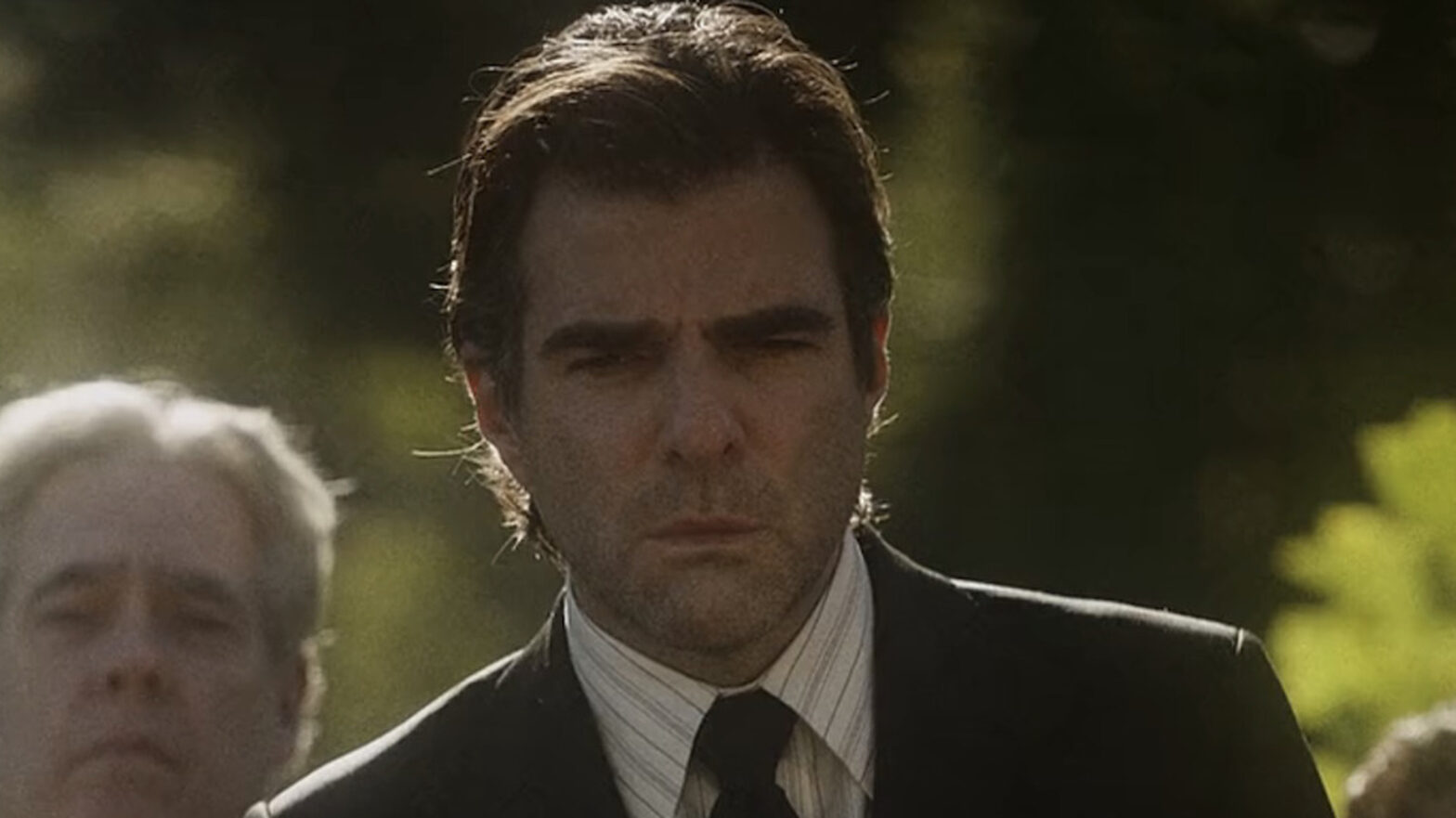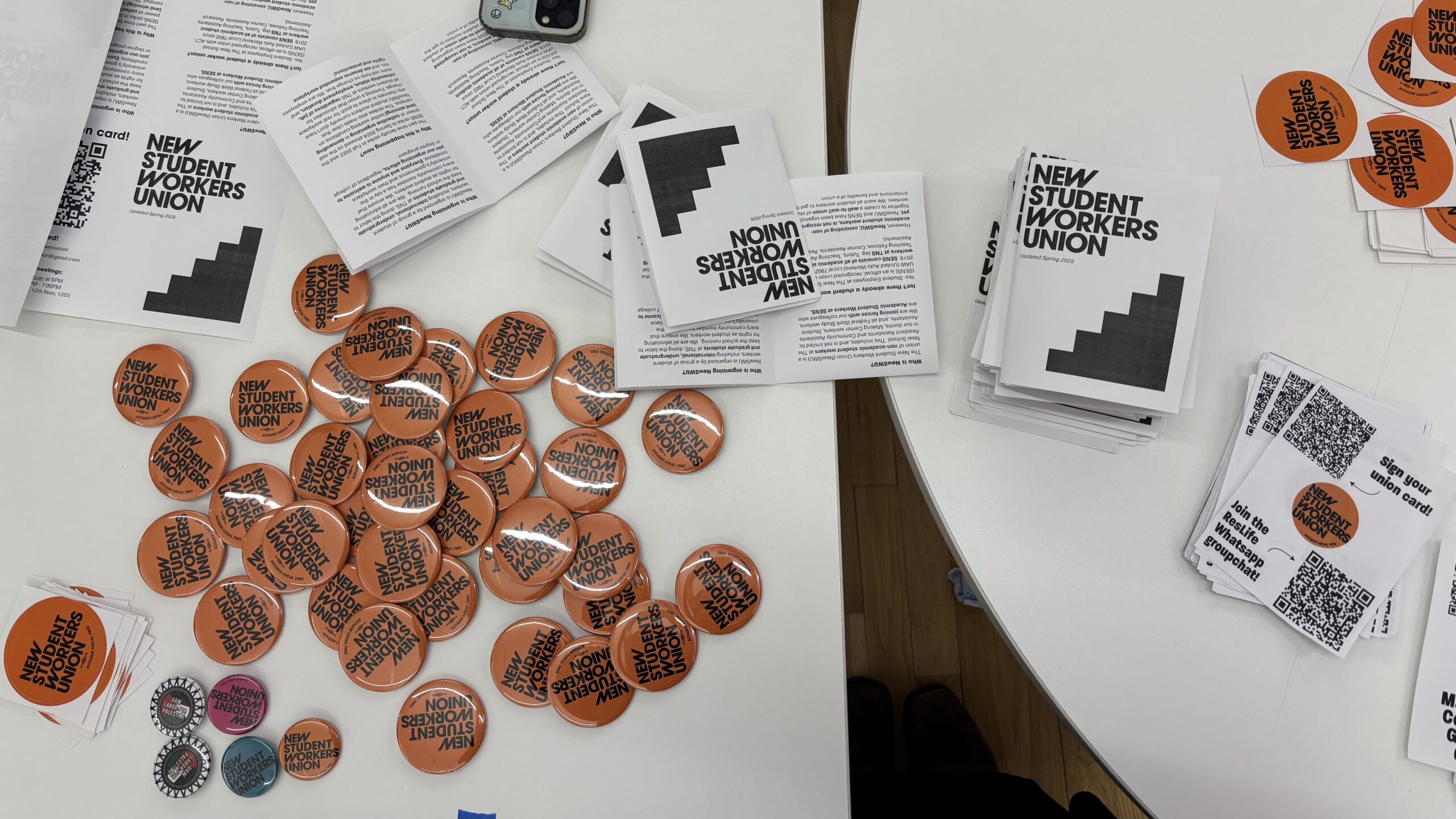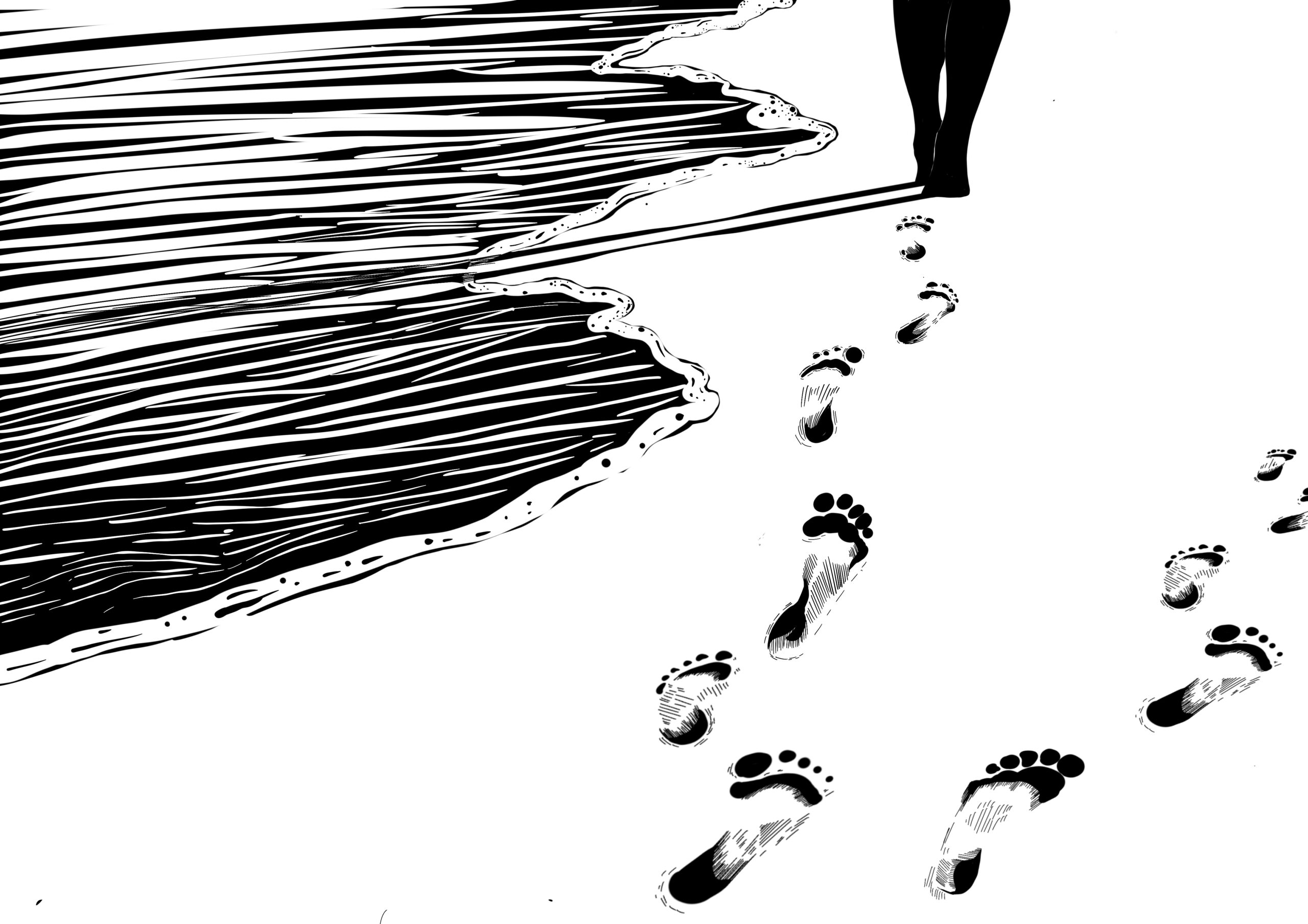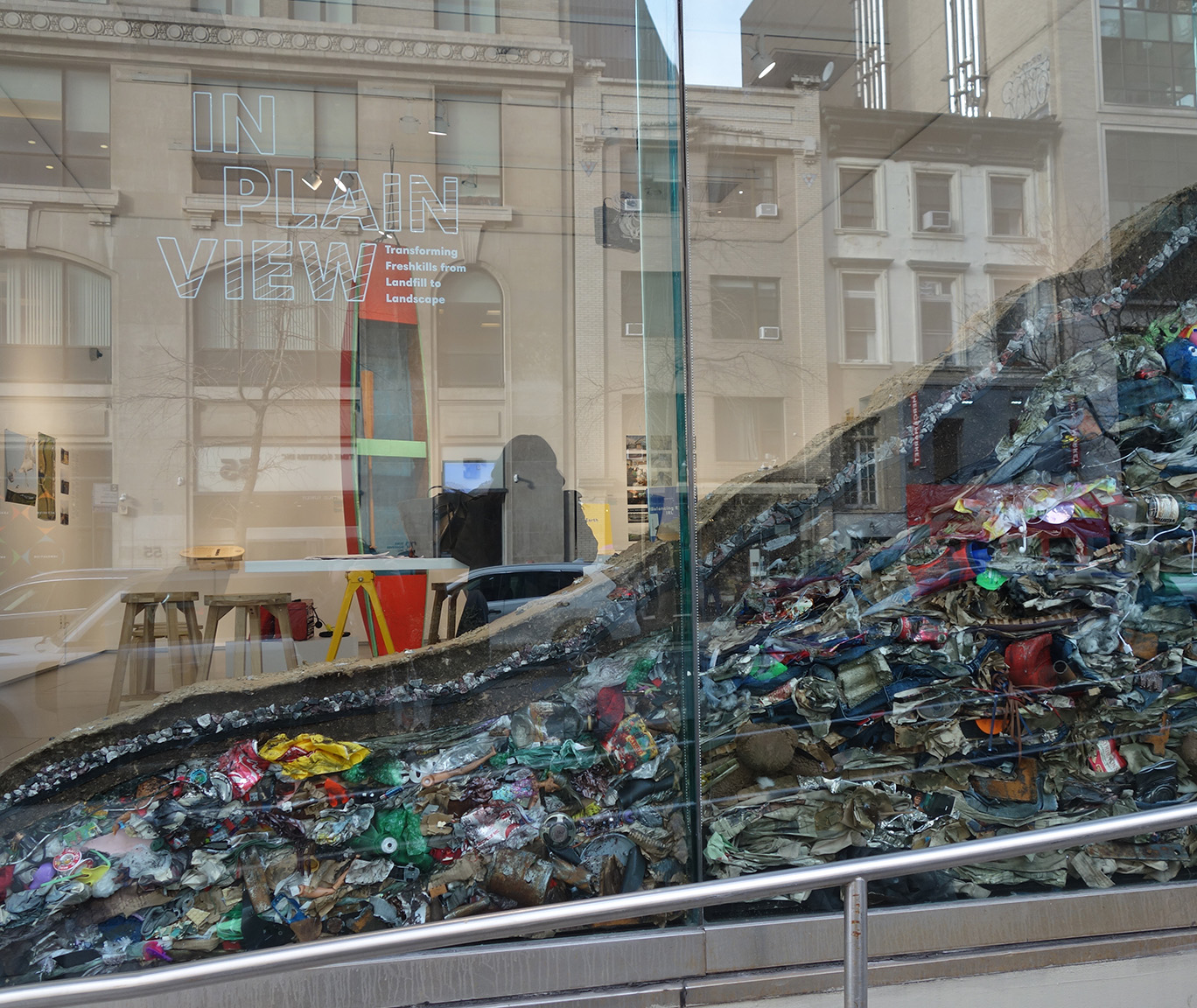Every week we’ll be recapping the newest episodes of “AHS: NYC.” Read at your own risk, spoilers ahead!
Episode 9, “Requiem 1981/1987 part one”
The mystery disease has taken the forefront as the leading cause of tragedy in the final installment of “AHS: NYC.”
The second to last episode opens with Theo’s funeral, the first of many that our main characters would have to attend. The scene has a focus on Sam as he attempts to fight off his overwhelming illness, ultimately leading him to faint. On his way down, we catch a glimpse of Big Daddy in the background, who we now consider to be a harbinger of death associated with the disease.
The rest of the episode more or less centers on Sam’s reckoning as he comes face-to- face with his shame over the violence he inflicted on others as a way to alleviate that discomfort. However, before he is forced to look at himself, Theo behaves as a supernatural guide for Sam as he walks through the AIDS ward of the hospital he woke up in. The reality is jarring for Sam as Theo shows him the endless young people who lay dying from the disease, many of them being the people Sam has used or abused for his own pleasure. Theo brings Sam to visit Danny, the young playwright who Sam tortured in his basement cage for days before letting him go. Not only does this sequence offer Sam a chance to express remorse for his actions (which he does rather panicked and half-heartedly), but it also exhibits how many young, talented lives were lost in the AIDS epidemic.
Theo behaves as a sort of ghost of Christmas past, present and future as he forces Sam to recognize how the trauma he faced from male authority figures, such as his father or past bosses, has created the selfish, self loathing, and sadistic character he is. Time has run out for Sam, as Theo reveals the reality that Sam has been left to be forgotten in that dim hospital room, like the many young men he deemed to be lesser than himself.
Finally Sam finds himself on the beach in front of his Fire Island home, facing Big Daddy. After attempting to run, Sam finds himself face-to-face with the silent angel of death and removes his mask, revealing an unnamed, not-as-muscular blonde young man, who Sam appears to recognize. The audience is left to assume this character’s identity. We know this is not the actual Big Daddy due to their differences in stature, but fan theories label him as a potential former lover or friend. In the end this young man is what seems to bring Sam to accept his final destination. The scene transforms into Henry on the beach alongside Theo and other antler-wearing young men, knee deep in the ocean as he releases Sam’s cremated remains into the wind, a touching yet tragic gesture that signifies Sam’s departure from the material world.
This episode spells out the fate for not one, but two of our characters, as we flash forward to 1987, the year of Patrick’s passing. A similar montage is afforded to Patrick, however Barbara behaves as his guide through his life, and more specifically, his experience as a gay man from childhood to adulthood. There is some notable symbolism in the fact that Theo was Sam’s guide and Barbara is Patrick’s, for they are both characters who were deeply impacted by their counterparts’ internal identity war.
Patrick’s descent is utterly heartbreaking, as his journey with Barbara begins with him crying out for help from anyone in the hospital as he attempts to pull himself into a wheelchair. Patrick’s pleading is particularly emblematic, as the lack of care and assistance exhibited by the US government during the AIDS crisis mimics the eerily desolate hospital landscape that Patrick attempts to navigate as a deathly ill individual.
Barbara appears in her wedding attire and guides Patrick into the light. He visits himself as a boy, watching his younger self be berated by his hyper-masculine father for not being able to shoot a gun with the correct precision. He begins to understand the depth of his shame regarding his sexuality and how he was led to believe that being himself was not an option. The exploration of this shame as a closeted person is a major theme for this episode, as well as the lasting impact that shame has on the people around an individual. Consequently, this realization only emphasizes the tragedy as death is the only opportunity Sam and Patrick had to truly understand and accept themselves for who they were.
The closing scene of the episode is truly heart wrenching. It focuses on Patrick and Gino in the hospital room as Patrick takes his last breaths. Kathy Pizazz, portrayed by Patti LuPone, sings “Calling You,” and is joined by the spirits of Barbara and Big Daddy as accompanying witnesses to Patrick’s passing. Additionally, we can now assume Barbara’s death was caused by HIV/AIDS, since the police were unable to find any signs of forced entry when investigating her passing. Her asphyxiation, portrayed as Big Daddy strangling her in the shower, also supports this theory since pneumonia was a common cause of death related to HIV/AIDS.
Episode 10, “Requiem 1981/1987 part two”
Flashback to 1981, where Adam attempts to go visit Dr. Wells only to realize that his friend has passed away. As he sits in her apartment mourning her loss, Big Daddy is seen lurking in the background, representing a silent, faceless killer.
Adam takes on the task of listening through Dr. Wells’ tape recordings that documented her research on the disease. He learns that Dr. Wells began experiencing symptoms after she had Adam as her sperm donor, which led her to believe the disease can be sexually transmitted.
Determined to make an impact and spread the word about the disease, Adam goes to the bathhouse in an attempt to hang up posters promoting condom usage. There he finds Kathy in her dressing room telling her he is there for a matter of public health. To his surprise, Kathy exclaims that she has been waiting for someone from the health department for weeks to no avail, and has been left alone with the bathhouse staff to figure out how to stop the patrons from getting sick. Another example of how federal assistance with the epidemic was non-existent for a long time.
Kathy reminisces on the legacy of the bathhouse and her performance career, ending her monologue with a defeated expression of “it’s over.” The end of Kathy’s career can be equated with the end of the era of sexual freedom and liberation that existed before the AIDS crisis, the days of sex positivity were replaced by the fear and anxiety of what could happen if you were to contract the disease.
Flash forward to 1987, where the death toll had increased by around 4,000 in just that year. Big Daddy is seen following Gino everywhere, lurking in the shadows as a constant reminder of death’s proximity. As the physical manifestation of the disease, Big Daddy is seen standing in front of a grave as a single file line of young men fall face first into the pit, one on top of the other. The masked leather villain is also seen shooting up the offices of The Downtown Native, the newspaper Gino writes for. He is relentless in his massacre, leaving one sole survivor: Gino.
Then, a particularly symbolic scene where Big Daddy slits Whitely’s throat, perhaps to convey that Whitely was not the evil force coming for them all, it was the illness all along.
As the montage continues, we see Gino get progressively more ill. His skin lesions multiply as flashes of newspaper headlines and ACT UP protests continue behind a stoic yet melancholy Gino. These scenes convey the loneliness and isolation felt by members of the community who watched their entire social circles pass away from the disease, and eventually Gino loses his battle with the illness, joining the hundreds of thousands of others who fell victim to HIV/AIDS. He finally reunites with Patrick as his lively self, finally free from his pain.
The season ends with Adam placing a necklace in Gino’s casket preparing to deliver Gino’s eulogy. Overwhelmed with emotion, he recognizes the heartbreaking reality that all of his close friends have been killed by the AIDS epidemic.
Ryan Murphy has sent a very important and symbolic message with this season finale. Instead of there being a huge plot twist or villain reveal, Murphy exemplified how the AIDS epidemic was one of the worst American horror stories of all. The U.S. government’s neglect of the epidemic affected the future of the LGBTQ+ community forever, as the world lost nearly an entire generation to HIV/AIDS. Murphy conveys exactly how devastating that period of time was by showing the intricacies of the victim’s lives and delivers a story that communicates the relentless nature of the AIDS crisis in the U.S.
This season is admittedly not as action-packed or gory as previous seasons but has a very significant role in portraying the reality of HIV/AIDS. While the story is a deviation from the usual AHS plotline that often follows a fictitious or sensational event, the horror at the heart of the series remains. It maintains its beautiful cinematography and quality writing, alongside the introduction of a meaningful elegy for the LGBTQ+ community that validates the utter devastation inflicted by the AIDS epidemic.








Leave a Reply